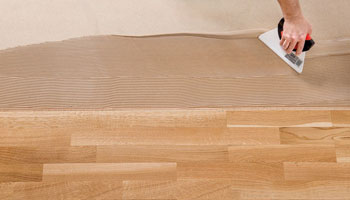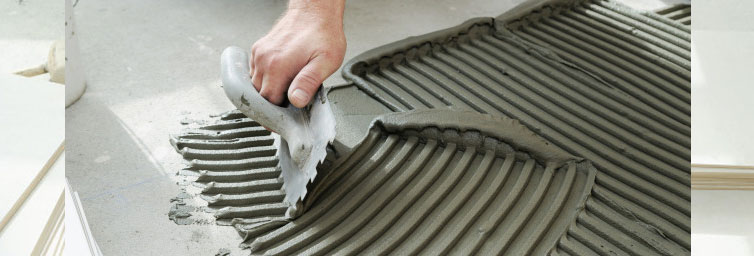You have no items in your shopping cart.
Post Requirement
From decades, we have installed tiles and natural stones using sand, cement and water. As times are evolving, and so does construction techniques, fortunately using adhesives made everything seems easy and fast.
Whether it is a wall tile or floor tile, the tile needs to be stick suitably to the base surface. Tile adhesive is anticipated to hold the tile in place for a long duration without de-bonding problems.
Tile adhesive is ready-mixed glue used to lay tiles in building structures. It is specially formulated from Portland cement, selected fine aggregates, with some additives to improve its properties for laying tiles.
Tile adhesives are used for fixing a variety of tiles on horizontal and vertical masonry surfaces, interior and exterior wall surfaces, floors, swimming pools, wooden substrates, and other substrates.
Uses of Tiles Adhesives
Flooring: Tiles adhesives offer better bonding strength compared to ordinary sand-cement mortar. They also contain waterproof properties and can be used in wet areas like kitchens, bathrooms, swimming pools etc. For improving its adhesive properties, various polymers like acrylic, latex, epoxy are used along with the adhesives.
Wall Cladding: Tile adhesives modified with polymers that consist of non-skid properties are used for application of fixing tiles on walls or wall-cladding.

Fixing Glass and Mosaics: Adhesives used for fixing glass and mosaics are expensive that comprise of high strength. Due to the addition of cement, these adhesives come in white colour and can also be used in wet areas or submerged areas.
Tile-on-Tile application: Adhesives used for this purpose are made by blending special polymers with the cementitious mixture. They possess non-skid and non-shrinkage properties.

Fixing Tiles on wooden surfaces: Adhesives used for fixing tiles on plywood or wooden base are of liquid form, which are mixed with non-skid adhesives before application. They have a property like high bonding strength which can be used in vibration prone areas.
Benefits of using Tile Adhesives
Easy to use: As tiles adhesives are ready to use mixtures, add water to the mix and use it. Tiles are not needed to be soaked, unbox the tiles and start laying on the floor. They can be grouted within a day without waiting for the moisture to complete.
Fast and efficient: Apply the mix of tile adhesive using a notched trowel on the area of about one square metre. After applying, start laying the tiles and quickly adjust into the lines.
Quality work: Using adhesives can avoid broken tiles, stains or efflorescence and also provides high bonding and shear strength and long-lasting tile work.
Variety of surfaces: They are used to lay tiles on various surfaces such as glass mosaics, polished substrates, drywall systems, on existing tiles without removing them, parking areas, swimming pools, industrial areas and much more.
Economical: Using adhesives for laying tiles requires less amount of material compared to the mixture of sand-cement, which leads to a lighter load to the building structure.
At present, there are various types of adhesives available in the market depending upon mix ratios, and quality of ingredients. However, tile adhesives are crucial in flooring and finding the right material would help you complete your project successfully.
Check Out: How to Tile A Floor - Steps & Precautions
Vani Paspula













